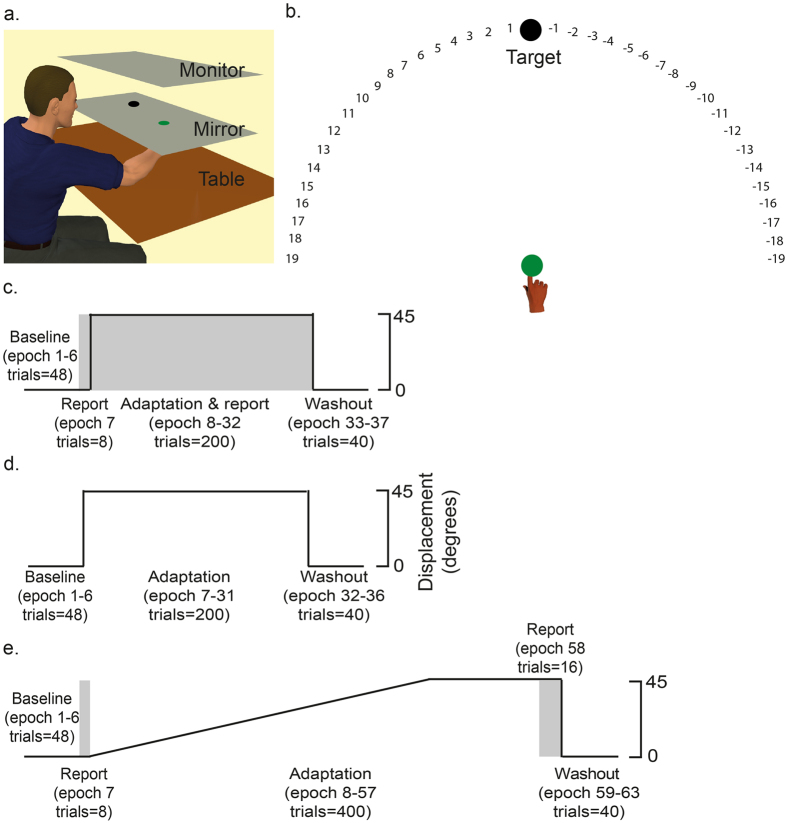Figure 2. Visuomotor adaptation task.
(a) Experimental set up. Participants made reaching movements towards targets displayed on a screen. (b) Verbal report task (Taylor et al.10). The target was placed at 0 with numbers being placed either side of the target at 5° intervals. Participants were asked to report which number they were planning to move their finger towards. This was used as a direct measure of participant’s trial-by-trial cognitive strategy. (c) Experiment 1: participants adapted to an abrupt 45° visuomotor rotation with terminal feedback whilst performing the verbal report task (grey) prior to each movement. (d) Experiment 2: participants adapted to an abrupt 45° visuomotor rotation with terminal feedback. (e) Experiment 3: participants adapted to a gradual 45° visuomotor rotation with online feedback. The verbal report task (grey) was performed at the start and end of the adaptation block. Amount of trials and epoch number are provided in brackets. Between baseline, adaptation and washout there were short rest periods.

